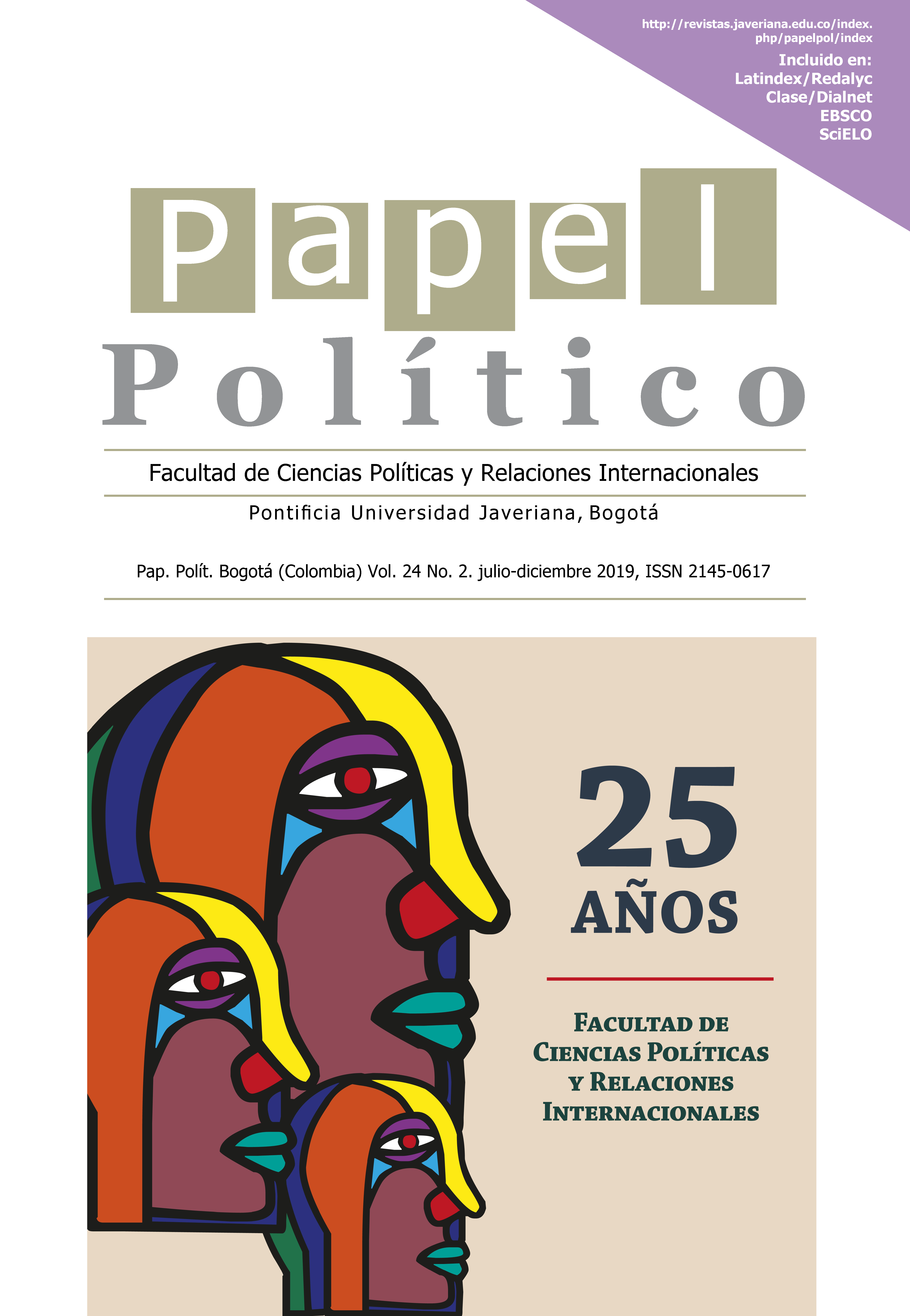Abstract
The transformation of the Chinese economy as a result of their national characteristics has been the object of a deep reflection in the last decades. In addition, different studies suggest that the economies in East Asia like Japan and South Korea owe their growth to the legacy of Confucius. In this century China puts Confucianism in the spotlight once again as a component of the ruler’s rhetoric for advancing to a “harmonious socialist society”. This work aims to pin down the building blocks of Confucianism in the development policies of the People’s Republic of China since their beginnings. This work is based on the analysis of the five-year resolutions issued by the National Congress of the CPC. It is concluded that Confucianism has influenced deeply and positively the economic development of China from the times of Mao Zedong to the first years of the current ruling by Xi Jinping. In this context, the relationship governor-subject, the pragmatism and Confucianism ethics stand out as the key building blocks.
Ames, R.T. (2010). What Is Confucianism? En W. Chang & L. Kalmanson (Eds.), Confucianism in Context: Classic Philosophy and Contemporary Issues, East Asia and Beyond (p. 67-85). Albany, NY: SUNY Press.
Communique of the Sixth Plenum of the 16th CPC Central Committee. (2006). Recuperado de: http://www.gov.cn/english/2006-10/11/content_410436.htm
Confucio. (1869). The Chinese Classics. (J. Legge, Trad). Segunda Edición. London: N. Trübner. Recuperado de: http://oll.libertyfund.org/titles/2270
Confucio. (s.f.). The Analects. Recuperado de: http://classics.mit.edu/Confucius/analects.4.4.html
Dittmer, L. (200). Communist Party History Revised. En D. Pong (Ed.), Encyclopedia of Modern China, Vol. 1 (p. 331-333). New York: Charles Scribner’s Sons.
Kirby, W.C. (2017). Engineering China: Birth of the Development State, 1928–1937. En K. Pomerantz (Ed.), The Pacific in the Age of Early Industrialization (p. 137-160). New York: Routledge.
Lam, W.W. (2009). Hu Jintao: 1942-. En D. Pong (Ed.), Encyclopedia of Modern China, Vol. 2 (pp. 256-259). New York: Charles Scribner’s Sons.
Moody Jr., P.R. (1974). The New Anti-Confucian Campaign in China: The First Round. Asian Survey, 14(4), 307-324.
Naughton, B. (2007). The Chinese Economy: Transitions and Growth. Cambridge, MA: MIT Press.
Resolution of 8th National Congress of the CCP. (1956). Recuperado de: https://www.marxists.org/subject/china/documents/cpc/8th_congress.htm
Resolution of 9th National Congress of the CCP. (1969). Recuperado de: https://www.marxists.org/subject/china/documents/cpc/9th_congress_report.htm
Resolution of 10th National Congress of the CCP. (1973). Recuperado de: https://www.marxists.org/subject/china/documents/cpc/10th_congress_report.htm
Resolution of 17th National Congress of the CCP. (2007). Recuperado de http://english.cpc.people.com.cn/66102/6290205.html
Resolution of 18th National Congress of the CCP. (2012). Recuperado de: http://english.people.com.cn/90785/8024777.html
Shusterman, R. (2004). Pragmatism and East Asian Thought. Metaphilosophy, 35(1-2), 13-43.
Spence, J. (1990). The Search for Modern China. New York, NY: W.W. Norton & Co.
Stephens, D. (2009). Confucianism, Pragmatism, and Socially Beneficial Philosophy. Journal of Chiense Philosophy, 36(1), 53-67.
Third Plenum of 11th Central Committee of CCP. (1987). Communique of the Third Plenary Session of the 11th Communist Party of China. Beijing Review, 52, 6-16.
Wong, E. (2013). A Chinese Virtue Is Now the Law. The New York Times. Recuperado de: https://www.nytimes.com/2013/07/03/world/asia/filial-piety-once-a-virtue-in-china-is-now-the-law.html
Yue, M. (1999). Hybrid Science versus Modernity: The Practice of the Jiangnan Arsenal, 1864-1897. East Asian Science, Technology, and Medicine, 16, 13-52
This journal is registered under a Creative Commons Attribution 4.0 International Public License. Thus, this work may be reproduced, distributed, and publicly shared in digital format, as long as the names of the authors and Pontificia Universidad Javeriana are acknowledged. Others are allowed to quote, adapt, transform, auto-archive, republish, and create based on this material, for any purpose (even commercial ones), provided the authorship is duly acknowledged, a link to the original work is provided, and it is specified if changes have been made. Pontificia Universidad Javeriana does not hold the rights of published works and the authors are solely responsible for the contents of their works; they keep the moral, intellectual, privacy, and publicity rights.
Approving the intervention of the work (review, copy-editing, translation, layout) and the following outreach, are granted through an use license and not through an assignment of rights. This means the journal and Pontificia Universidad Javeriana cannot be held responsible for any ethical malpractice by the authors. As a consequence of the protection granted by the use license, the journal is not required to publish recantations or modify information already published, unless the errata stems from the editorial management process. Publishing contents in this journal does not generate royalties for contributors.


